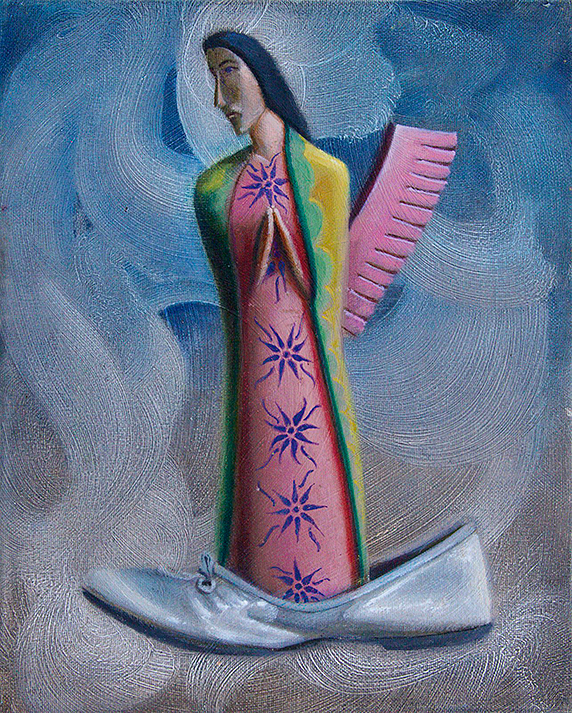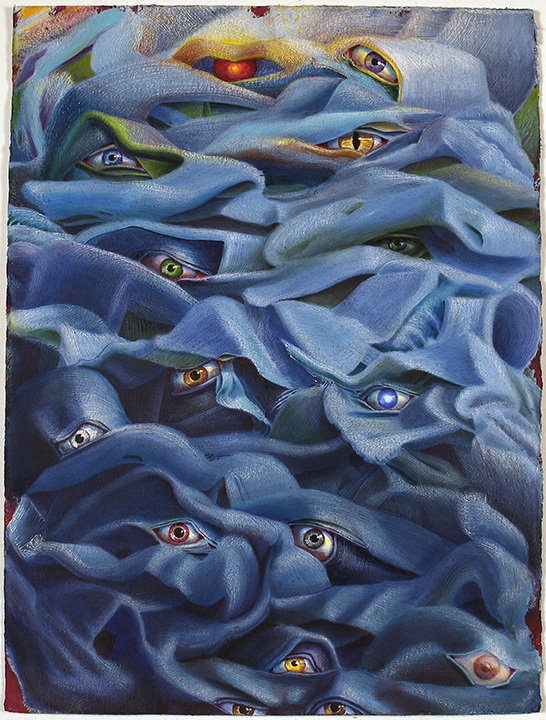The Singular Double Visionary Art of Christopher Moses
By: Tom Patterson - Page Two
Several years ago, Moses began what became an ongoing series of paintings in which his houses occupy landscapes that he creates by intermingling pastel dust with gesso and, in his word, “swirling” the resultantly colored gesso over his painting surface. Variations in the pressure of brush on surface create lighter and darker areas in this spontaneously laid-down ground and thereby an illusion of shadow and light, and hence depth--a phenomenon well known to children who finger paint with similar spontaneity. Exploiting the resemblance of such loopy, gestural brushstrokes to rugged topography and in some cases choppy ocean waves, Moses counterbalances spontaneity with control by painting one or more of his houses where he can fit them in in a manner that serves the overall composition, distorting them as necessary to do so. He says that the particular personalities or moods that seem to be reflected on these house-faces are entirely determined by chance--by the kinds of distortions he has to make in a house in order to fit it into its abstract-expressionist landscape.
The image occasionally appears singularly in Moses’ art, as in works such as Illumination Station (the all-seeing eye as TV test pattern) and Parota Tree (where the lone, tiny eye is concealed in a knothole in the bark of a naturalistically painted tropical tree).
In a related vein, the pale orbs that appear to float through some of Moses’ landscape or cloudscape images can also be read as manifestations of disembodied consciousness moving like clouds or clouded, disembodied eyeballs--or in some cases orbiting planets or moons.
Antithetical to the latter images are the “black holes” that appear in some of Moses’ paintings, most notably another of his TV-screen-format images, The Last Broadcast. Here the television set becomes a black hole which, perhaps at the moment at which it’s about to absorb our universe.
To refine his traditional painting skills--and test his ability to produce a “realistic” view of a world that has always appeared doubled to him--Moses routinely produces occasional still-life and landscape images.
In the latter images he demonstrates that he can quite adeptly represent nature or “reality” as it’s commonly experienced through our visual organs, but the landscapes he seems to be most interested in exploring through his art are the endlessly mysterious terrains that lie behind the eyes and beyond the body.
Back: Page One

PRAYING
Oil On Canvas - 11 x 18
Reality Check - Fantasy Realitites

PRAYING
Oil On Canvas - 30 x 22
The Eyes Have It - Blood Behind the Blues
